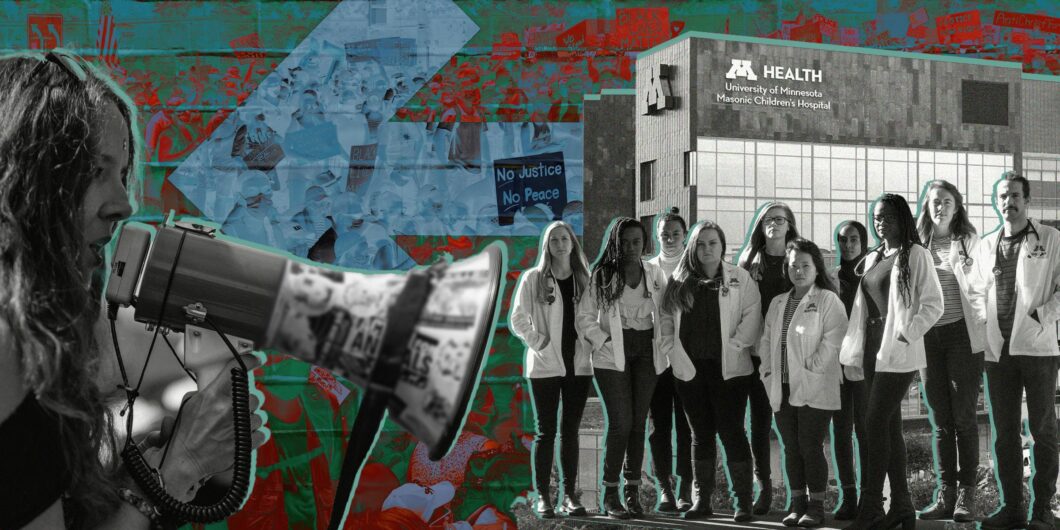Medicine and the Moral Imagination
We had just seen our last patient in the hematology/oncology clinic and were seated together around a table to debrief. The patient was a middle-aged lady whose cancer had been in remission for years. The day prior to her visit, she had undergone a CT scan and the news was not good. With three medical students at my side, I shared the unwelcome findings of a recurrence. Her tears of dismay were met with words of comfort and a plan for our next treatment. We listened, did what we could to share her pain, and assured her that we would get through this together.
As we exited, she responded with gratitude, a hug, and a weak but genuine smile. Nonetheless, I could feel these young physicians struggling to process the weight of stepping towards a patient in their suffering. One of them verbalized what all were feeling. “That was hard…how do you do this?” After answering briefly, I posed another question. “Why do we care about her at all? Why not just deliver the news, tell her the prognosis and next treatment, and leave?” The room was quiet initially. As they started to respond the answers varied, but one dear soul, responding with an anguished expression, simply and deliberately said, “I don’t know.” Such questions probe our understanding of what it is to be a virtuous physician, but even more deeply, what it means to be human.
Over the years I have had many such conversations with young physicians trying to understand the nature of our profession. Are physicians simply clinical scientists treating disease, or are we to care for the human being afflicted with the disease? In today’s pluralistic culture, there are many narratives competing to define our humanity. Walker Percy summarizes the problem with his typically sardonic humor in Lost in the Cosmos: “You live in a deranged age—more deranged than usual, because despite great scientific and technological advances, man has not the faintest idea of who he is or what he is doing.”
Put simply, we now live in a society with no agreed-upon answer to the question of what it means to be a virtuous person. But if humans (including medical students) are “meaning seeking” creatures, as Victor Frankl argued, failing to provide resources to nurture the moral imagination fails them at a foundational level. In the absence of guidance then, many of these young physicians are turning to the language of power, privilege, and oppression to fill this void.
It is to these concerns that Dr. Gunderman brings his vast knowledge and wisdom in his essay entitled “Diagnosing Ideological Medicine.” He begins with the recently publicized ethics pledge from the University of Minnesota Medical School, written by first-year students. Like many writers in this genre, the pledge has a self-righteous tone with the promise to right all historical wrongs. The pledge is filled with tropes from the most recent critical theorists, including the anti-racists. In his book critiquing these so-called “third wave” anti-racists, John McWhorter argues that their teaching constitutes a new religion. This religion then provides a fashionable and satisfying set of ideas to provide moral guidance for medical students. Moreover, the veracity of this faith is endorsed by both the AMA and the AAMC. Dr. Gunderman demonstrates convincingly the superficial and sometimes contradictory thinking of the authors, but he also rightly applauds their idealism. Phrased another way, their desire for the profession to be a force for moral good is a virtue, not a vice. It is simply misdirected.
He then poses questions about ways we can retool medical education to fill this moral void. Seeking to learn from the greatest figures in the history of medicine, he summarizes the remarkable contributions of Dr. Rudolph Virchow, paying particular attention to his linking of medicine, social science, and politics. It is worth remembering that in the late 19th and early 20th centuries, the medical profession had very little understanding of disease. Antibiotics, anesthesia, and things we take for granted were decades in the future. In his time, many premature deaths were the direct result of disease related to poor sanitation and unsafe drinking water, problems remediable by large-scale public health projects. But sadly, in today’s world, the links between socioeconomic status, poverty, and race are far more complicated and difficult to sort out. I suspect that if practical means exist to improve on our current gaps in mortality, they are beyond the grasp of our political class.
Finally, Dr. Gunderman rightly argues that medical education today does little to stir the moral imagination of our students. He laments our reliance on impersonal transfer of information, the loss of genuine discussion, and the use of single-answer multiple-choice questions as the chief means of evaluation. C.S. Lewis once suggested that reason was the organ of truth, but imagination was the organ of meaning. If this is correct, then Dr. Gunderman wisely concludes that modern medical pedagogy will do little to aid students in filling the void in their souls.
Our students and faculty, however, would respond that, on the one hand, we are victims of our own success and, on the other, victims of our accreditation and licensing cartels. In the case of the first, the ascendance of the scientific enterprise over the last 100 years has led to discoveries about the molecular and physiologic basis of almost every known disease. Clinical investigators have leveraged these discoveries to develop treatments at a pace unprecedented in history. As a result, the modern world of medicine now offers curative treatments for many previously fatal conditions and treatments that prolong life and relieve suffering for many that are as yet incurable.
The patient-physician encounter provides a medium through which students can develop their moral imagination. Through guided reflection, discussion, and in genuinely humane interactions, we can restore to education both the breath of life and an appreciation of its fragility.
But with the rise of the volume of information and knowledge comes the challenge for medical students to master the ever-growing mass of data needed to practice. In medical education, we may be living in the prophetic vision of T.S. Elliot from his poem, Choruses from the Rock.
Where is the Life we have lost in living?
Where is the wisdom we have lost in knowledge?
Where is the knowledge we have lost in information?
On the second front, we must remember all students need to be licensed and every school must maintain its accreditation. Licensing requires the ability to perform well on standardized multiple-choice tests so these will remain a necessary evil. Accreditation is earned by attending to tedious lists of ever more complex regulations. In fact, having just completed our accreditation site visit, the standards are regarded almost as sacred texts. Similar to Jewish tradition, the actual standards serve as the Torah, while an enormous oral but binding tradition of how to apply the standards hovers over every medical school under the microscope. In order to gain some insight into this oral tradition, most schools now hire consultants to review their documentation and avoid the wrath of the accreditors. However desirable it may be to hope for a wholesale retooling of medical school curricula, it seems impractical in this context.
Where then do we look to offer a moral foundation and replenish the imaginations of our young colleagues? Perhaps our gaze needs to be redirected away from public policy as the moral epicenter of the profession. Instead, we could follow the time-tested axioms endorsed by Hippocrates, Avicenna, Maimonides, and countless others from medicine’s past. As the physician-philosopher Karl Jaspers phrased it in his lectures, Philosophy and the World, “The more our time seems to force us into an inherently confused relationship of doctor and patient, the more firmly we must recall what a true physician is like.”
Here we turn to Dr. Edmund Pellegrino for wisdom as the preeminent physician philosopher of our era. He observed echoing Hippocrates,
no matter how broad or socially oriented we make medicine, illness remains a universal human experience, and its impact on individual human persons remains the reason why medicine and physicians exist in the first place.
Thus the immediate and practical end of medicine is an action taken in behalf of one who is ill, who has decided…to seek medical help. Health is…attainable only if the special human relationship of healing is a successful one. It is that relationship which provides the architectonics of medicine as medicine…
Karen Garaghty summarized his philosophy as “deceptively simple: medicine is at heart a moral enterprise founded on the covenant of the patient-physician relationship.” If as a profession we can take our eyes off the political and culture wars in our society and agree to focus together on those human beings under our care, I think there we can find common ground and a way forward.
Focusing on the patient allows us to develop a moral imagination based on how we care for individuals. When we take account of the profound and beautiful complexity each person brings to the medical encounter, adjusting our decisions to fit each patient will improve each person’s health. Over a practice life, such decisions will lead to a healthier society one patient at a time. Such an approach requires the virtues of patience to listen to the patient carefully and courage to resist the dehumanizing tendencies of our healthcare system to reduce the patient to a customer and the physician to a cog in the healthcare factory.
The patient-physician encounter provides a medium through which students can develop their moral imagination. Through guided reflection, discussion, and in genuinely humane interactions, we can restore to education both the breath of life and an appreciation of its fragility. Creating space for these kinds of human interactions will go a long way towards reducing our dependence on multiple-choice questions and helping us train not just the smartest physicians, but also the most caring. Conversations such as the one described in the introduction to this essay not only enrich the education of students, but they also provide encouragement to those of us who teach to continue our quest to be the mentors our students deserve.


